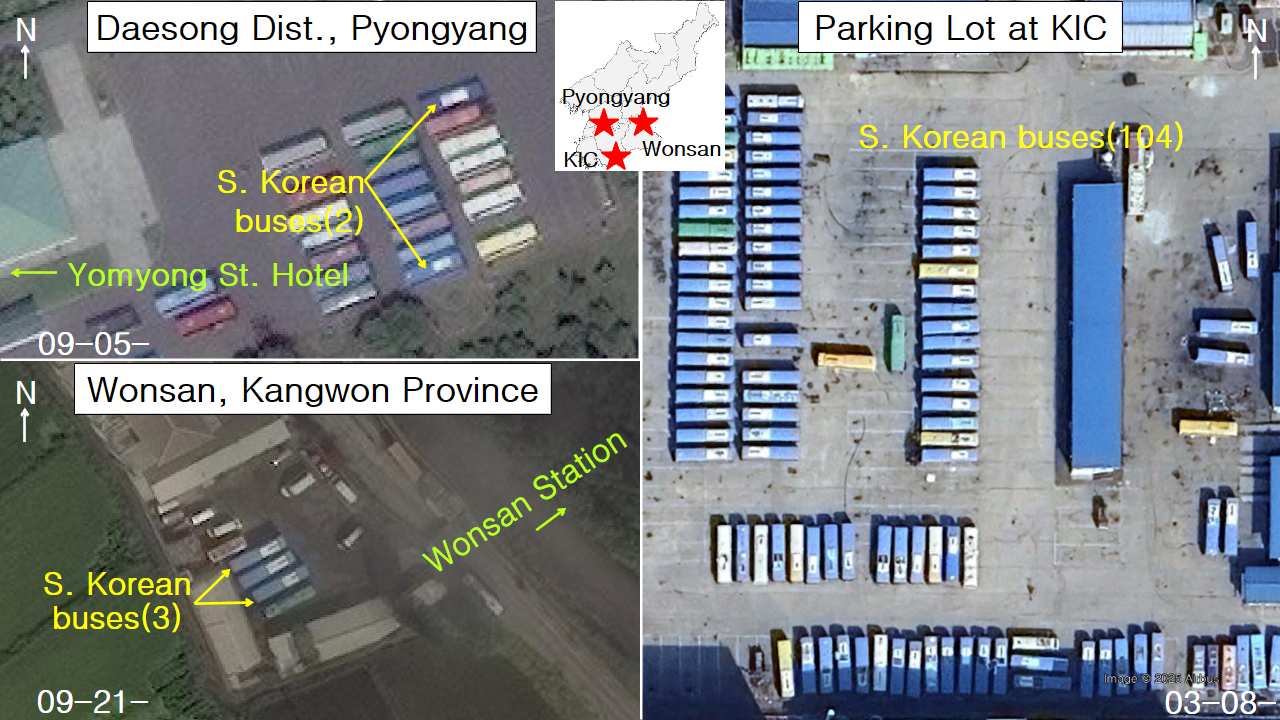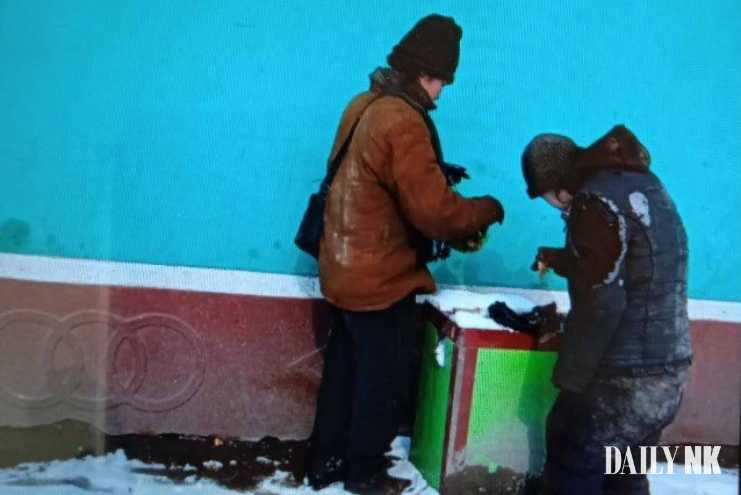North Korea has continued using South Korean buses from the Kaesong Industrial Complex in an unauthorized fashion even after the complex was closed, and the authorities are even expanding their use, with the vehicles being detected in several places across the country.
The buses have been seen in a parking lot in front of a high-end hotel in Pyongyang. Five were spotted in a parking lot at the Wonsan Kalma Coastal Tourist Zone, and they have even been observed in downtown Wonsan. Using satellite images, I confirmed that South Korean buses have gradually expanded their area of operations, plying the Pyongyang-Kaesong highway, touring the Goryeo-era tombs near Kaesong, and even venturing to rural parts of North Hwanghae province.
From industrial transport to tourist buses
South Korean buses from the Kaesong Industrial Complex are illegally operating in Pyongyang and Wonsan. Only about 160 or 170 of the 300 or so buses that used to be seen at the industrial complex were spotted in satellite images taken in early March. (WorldView-3, GeoEye-1, Google Earth)
Satellite images recently detected that North Korea was illicitly using South Korean-made buses outside their initially designated area of operations. Three South Korean buses were spotted in a parking lot in the Wau neighborhood of Wonsan, Kangwon province. One can easily make out the buses in satellite images due to their distinctive sky blue and white design. They were spotted about 350 meters behind Wonsan Station and are seemingly used to transport tourists between Wonsan and the Wonsan Kalma Coastal Tourist Zone.
South Korean buses were also spotted in central Pyongyang. Two were seen in a parking lot in front of a hotel on Yomyong Street in Taesong district’s Yonghung 2 neighborhood. This is the first time satellite imagery has confirmed that South Korean buses from the Kaesong Industrial Complex are operating in Pyongyang. I believe the buses are used to carry foreign tourists or VIPs to the hotel.
Meanwhile, of the 300 or so South Korean buses that used to be parked at Kaesong Industrial Complex, only 104 were spotted there in satellite images taken in early March.
Voice of America reported in December that South Korean buses had been seen operating near Kaesong. Using Google Earth, I took a closer look at the situation. Two South Korean buses were seen parked in an empty lot in Kyejong Village in North Hwanghae province’s Kumchon county late last year. The buses’ area of operations appears to have expanded beyond the Kaesong Industrial Complex to even rural parts of North Hwanghae province.
Satellite images captured South Korean buses from the Kaesong Industrial Complex expanding their area of operations — plying the Pyongyang-Kaesong highway, carrying sightseers to the Goryeo royal tombs near Kaesong and even operating in rural areas of North Hwanghae province. (Google Earth)
In the upper right of the image, I see a bus on a road in Haeson village in Kaesong’s Panmun district. I believe this bus takes sightseers to the Goryeo royal tombs nearby. Kaesong was the capital of the Goryeo Dynasty (918-1392), and fittingly, grand royal tombs such as the Wanggeonneung, Myeongneung and Chilleung tombs are concentrated around Haeson village.
Another satellite image showed a South Korean bus on the southbound lane of the Pyongyang-Kaesong highway. Judging from how the front of the bus (the white roof) is pointed downward, it appears the bus was returning to Kaesong from Pyongyang.
The South Korean buses at the Kaesong Industrial Complex are Hyundai Super Aero City models produced and provided by Hyundai Motor. According to an article that appeared on Sept. 5 of last year in 38 North, the U.S.-based media outlet specializing in North Korea-related news, about 300 such buses could regularly be spotted in the parking lot of Kaesong Industrial Complex in 2015, at the apex of the complex’s activity.
In Google Earth images taken in early March, only about 160 to 170 of the buses could be seen throughout the complex, including its parking lots. I believe the other 130 or 140 buses are being used outside the complex in unauthorized fashion. Most are being used as public transportation in downtown Kaesong, about 7 kilometers from the industrial complex, while about 10 have appeared in Pyongyang and Wonsan in recent satellite images. This suggests that South Korean buses are used to ferry foreign tourists or VIPs to the Wonsan Kalma Coastal Tourist Zone, the Goryeo royal tombs near Kaesong or high-end hotels in the capital.
Read in Korean





